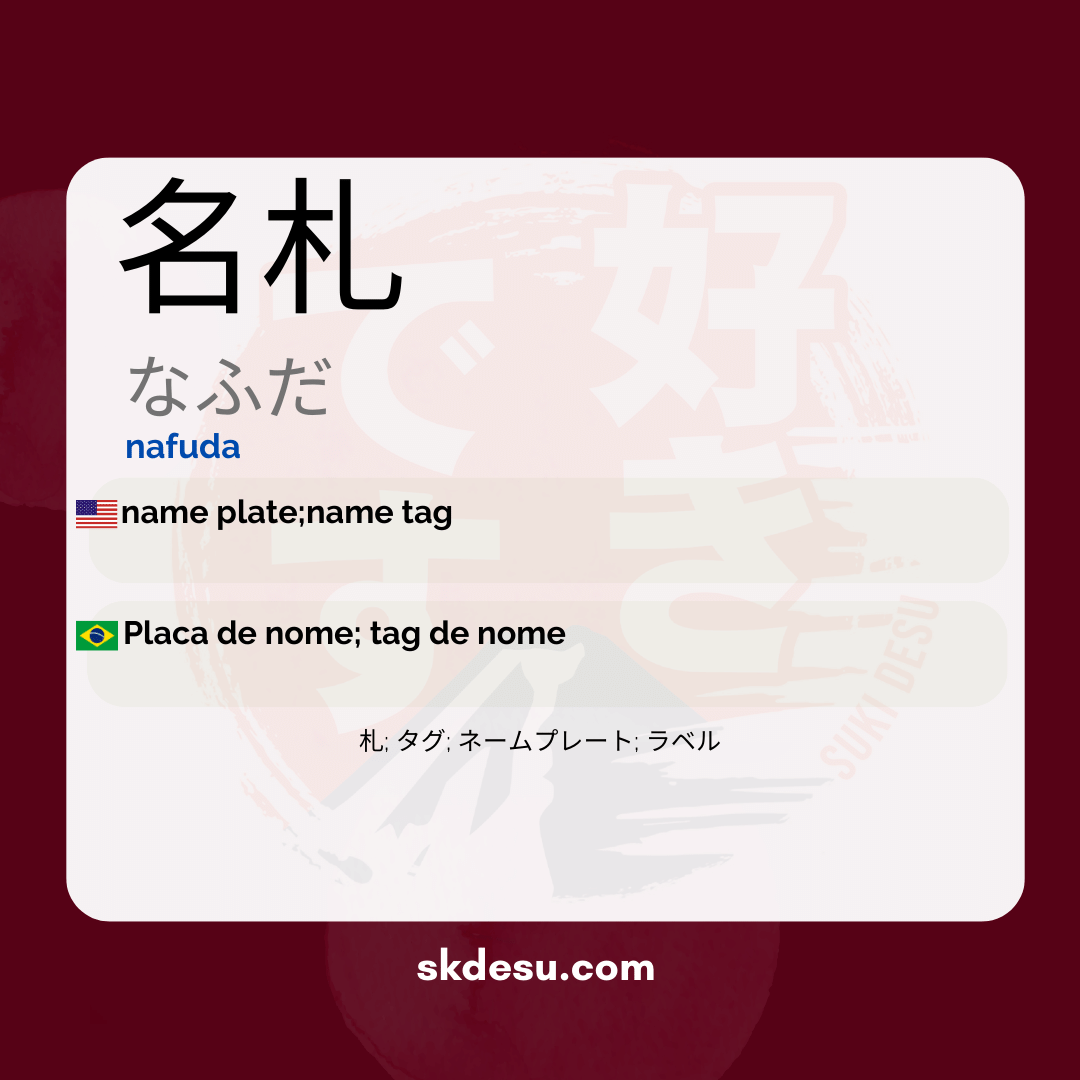Translation and Meaning of: 名札 - nafuda
If you have ever visited Japan or watched an anime set in a Japanese school, you have probably noticed small cards hanging around the neck or attached to clothing. These items are called 名札 (なふだ, nafuda), and their use goes far beyond simple identification. In this article, we will explore the meaning, origin, and cultural context of this word, as well as practical tips for those studying Japanese.
The term 名札 is composed of two kanji: 名 (name) and 札 (plate, tag). Together, they form a concept present in everyday Japanese life, especially in schools and workplaces. But why is this word so relevant? And how does it differ from other similar terms? Let's find out!
Meaning and Use of 名札
In its essence, 名札 refers to a personal identification badge. It can be used as a name tag, name label, or even in more traditional contexts, such as at formal events. In Japanese schools, for example, it is common for students to wear 名札 sewn onto their uniforms or hanging around their necks.
The use of these name tags is not limited to educational institutions. Companies, hospitals, and even public events can adopt 名札 to facilitate identification. In some cases, they are also used on baby clothes or personal belongings, such as backpacks, to prevent loss.
Origin and Cultural Context
The practice of using 名札 has historical roots in Japan. During the Edo period (1603-1868), merchants and artisans already used small plaques to identify their goods. Over time, the concept evolved to include personal identification, becoming an integral part of Japanese organizational culture.
Today, the 名札 not only serves a practical function but also reflects values such as discipline and order. In schools, for example, its presence reinforces the idea of responsibility and belonging to the group. Interestingly, in some regions, like Okinawa, its usage may vary due to distinct cultural influences.
Tips for Memorizing and Applying
If you are learning Japanese, an effective way to memorize 名札 is to associate the kanjis with concrete images. Think of 名 as "name" and 札 as "plate" — together, they form a "nameplate." This simple logic helps to cement the term in your vocabulary.
Another tip is to observe the use of the word in real contexts. Series like "GTO" or "Assassination Classroom" often show students using 名札, which can serve as visual reinforcement. Additionally, practicing with flashcards or notes in notebooks is also a valid strategy.
Vocabulary
Expand your vocabulary with related words:
Synonyms and similar words
- 札 (fuda) - Tag or card used to identify something.
- タグ (tagu) - Label, often used in digital or product contexts.
- ネームプレート (nēmu purēto) - Nameplate used for personal identification.
- ラベル (raberu) - Label, usually used to classify or identify products.
Romaji: nafuda
Kana: なふだ
Type: Noun
L: jlpt-n1
Translation / Meaning: Name plate; name tag
Meaning in English: name plate;name tag
Definition: A small paper or plastic card with your name and affiliation written on it. Use it to show your identity.
Quick Access
- Vocabulary
- Writing
- Sentences
How to Write in Japanese - (名札) nafuda
See below a step-by-step guide on how to write the word by hand in Japanese. (名札) nafuda:
Example Sentences - (名札) nafuda
See below some example sentences:
Nenhum resultado encontrado.
Other Words of this Type: Noun
See other words from our dictionary that are also: Noun

